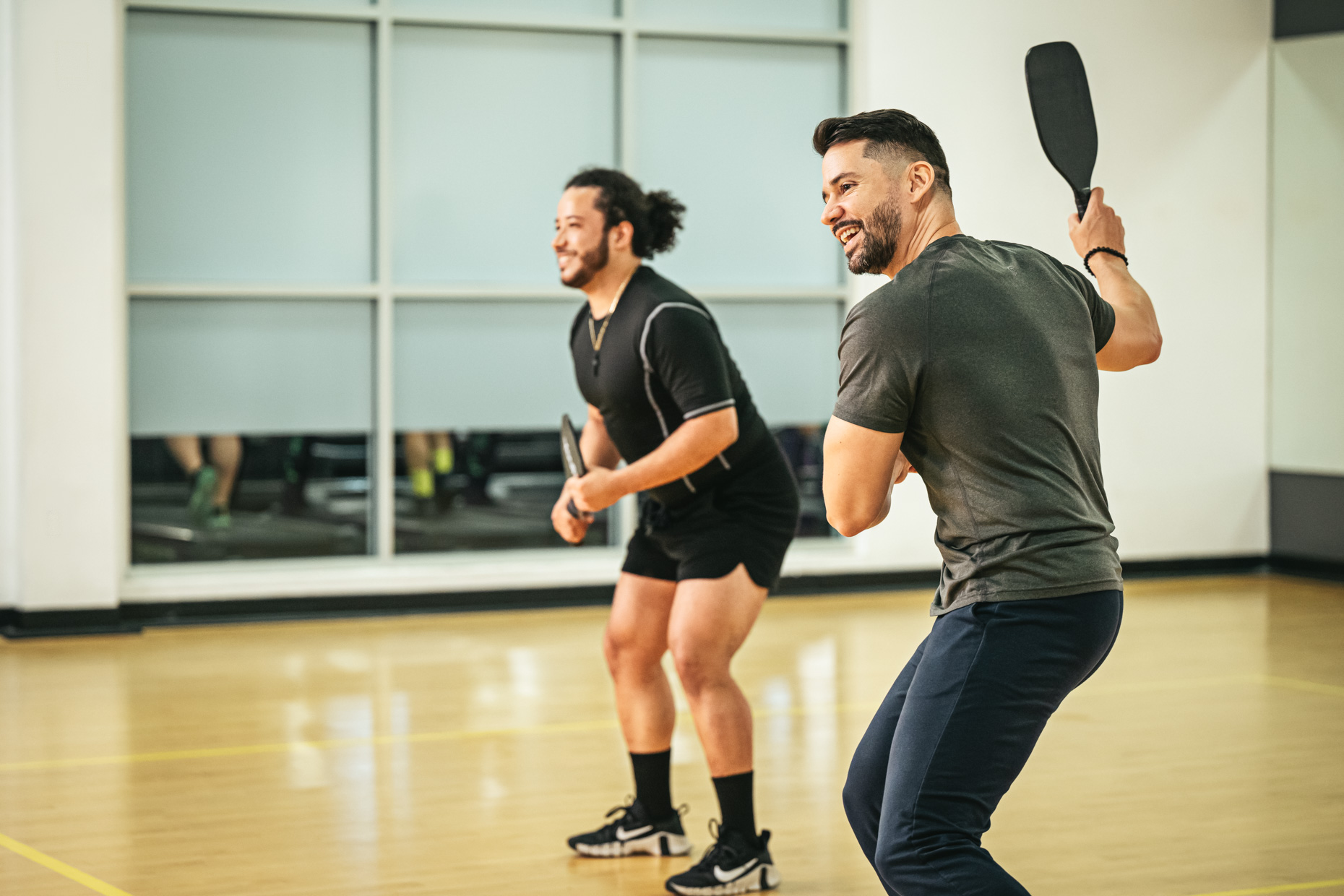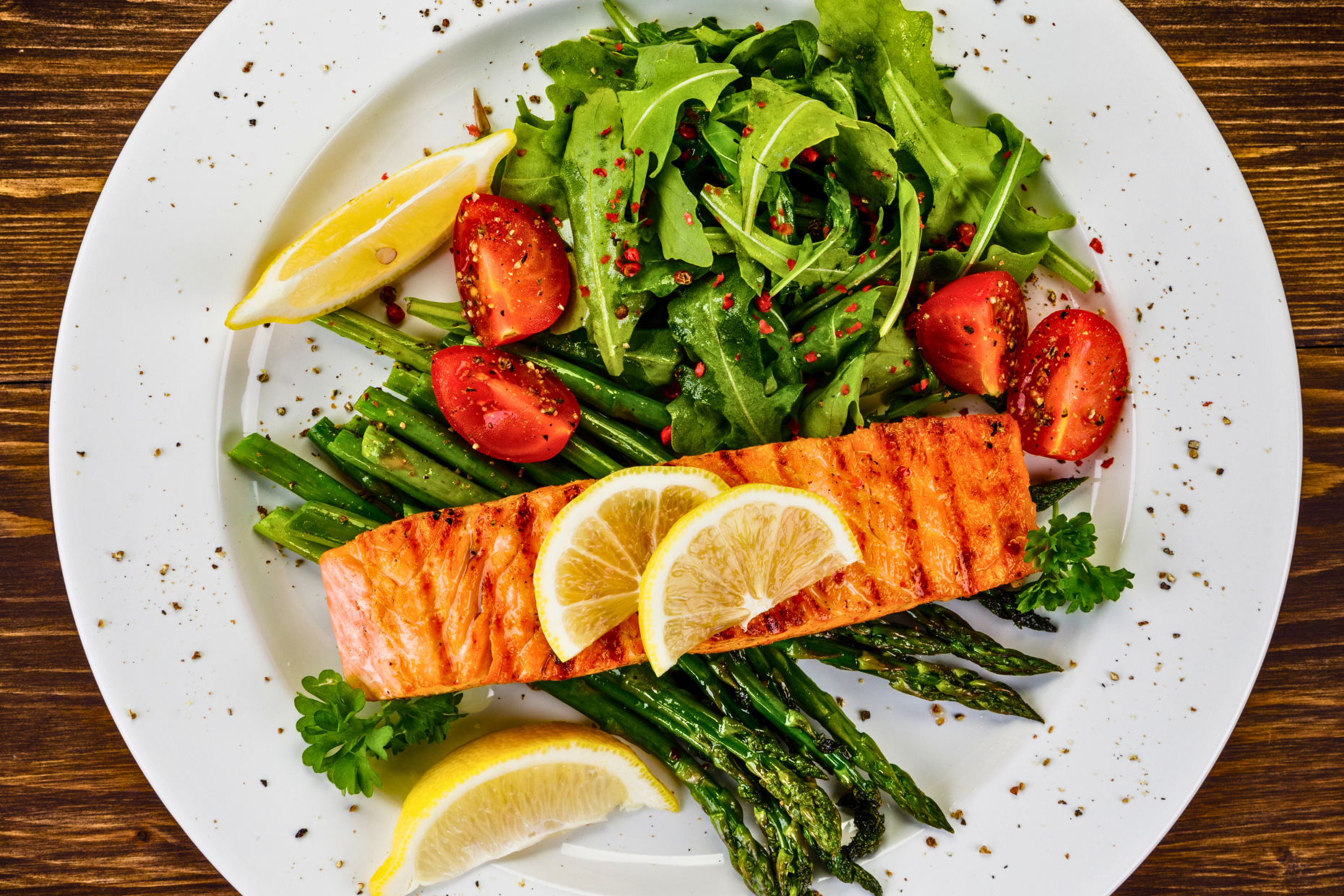Pickleball is taking the world by storm, blending the best of tennis, badminton, and ping-pong into a fun, social, and surprisingly athletic activity.
Whether you’re a seasoned racket sport enthusiast or a complete newbie, here’s everything you need to know about pickleball, from the basic rules to essential strategies and terminology.
Ready to pick up a paddle and join the fun? Let’s dive in!
What is Pickleball?
Pickleball is a paddle sport played on a badminton-sized court with a slightly modified tennis net. It’s played with a perforated plastic ball and solid paddles. The game can be enjoyed by people of all ages and skill levels, making it a fantastic way to stay active and connect with others. It’s easy to learn but challenging to master, offering a unique blend of strategy and athleticism. Pickleball can be played as doubles (two players per team) or singles (one player per team), though doubles is more common.
The Essential Rules | Simplified Breakdown
Understanding the rules is the first step to enjoying pickleball. Here’s a simplified breakdown to get you started:
- Serving: The serve must be underhand, below the waist, and diagonally across the net, landing in the opponent’s service court. The server must have at least one foot behind the baseline when serving. The serve must clear the non-volley zone (the “kitchen”).
- Scoring: Points are only scored by the serving team. A game typically goes to 11 points, and you must win by two points.
- The Two-Bounce Rule: This is a crucial element of pickleball. On the serve, the ball must bounce once on each side of the net before being returned. After the initial two bounces, players can volley the ball (hit it in the air) or let it bounce once before hitting it.
- The Non-Volley Zone (The Kitchen): This is the area of the court closest to the net. Players cannot volley the ball while standing in the kitchen. A player can enter the kitchen after hitting a ball that has bounced, but they cannot volley while in the kitchen.
- Faults: A fault occurs when a player violates a rule. Common faults include hitting the ball out of bounds, not clearing the net, volleying the ball in the kitchen, or not adhering to the two-bounce rule.
- Doubles Play: In doubles, the player on the right side of the court serves first. After a point is scored, the server switches sides with their partner. When the serving team loses a point, the serve goes to the other team. On the very first serve of the game, only one player will serve. Turning the ball over to the opposite team on a fault. After this round, both players on each team get the opportunity to serve.
- Lines: A ball that lands on any part of the line is considered “in.”
Frequently Asked Questions about Pickleball Rules
- Q: Can I step out of bounds to hit the ball? Yes, players can step out of bounds to play the ball, but they must adhere to the kitchen rules.
- Q: What happens if the ball hits the net? If the ball hits the net and lands in the correct service court, it is still in play.
- Q: How do I know if the ball is out? If the ball lands completely outside the boundary lines of the court, it is considered out.
Pickleball Lingo
Like any sport, pickleball has its own unique vocabulary. Here are some essential terms you should know:
- Ace: A serve that is not returned by the opponent.
- Banger: A player who hits the ball with power, often preferring smashes to dinks.
- Baseline: The line at the back of the court.
- Dink: A soft shot, often used in the kitchen, designed to keep the ball in play.
- Fault: A violation of the rules.
- Kitchen (Non-Volley Zone): The area of the court closest to the net where volleying is prohibited.
- Lob: A high shot that sends the ball deep into the opponent’s court.
- Rally: Continuous play between serves.
- Smash: A powerful overhead shot.
Ready to Get Started?
Pickleball is a fantastic sport that offers something for everyone. Whether you’re looking for a fun way to stay active or a competitive challenge, pickleball has you covered. So, grab a paddle, find a court, and get ready to experience the excitement of pickleball! Ready to try it out?
Register for a three-day pass at YouFit Gyms and experience the thrill of pickleball firsthand!
Pickleball Equipment Essentials
- Paddle: Pickleball paddles come in a variety of shapes, sizes, and materials. Choose a paddle that feels comfortable and suits your playing style.
- Ball: Pickleballs are made of plastic and have holes for airflow. They are designed for specific playing conditions, such as indoor or outdoor.
- Shoes: Wear athletic shoes that provide good support and traction.
- Clothing: Wear comfortable, athletic clothing that allows for freedom of movement.
Pickleball Etiquette
Like any sport, pickleball has its own set of etiquette guidelines. Here are a few tips to ensure a positive playing experience for everyone:
- Be respectful of your opponents and partners.
- Call your own lines fairly.
- Be a good sport, win or lose.
- Be patient with new players.
- Have fun!
Get your FREE 3-Day Pass and see all your closest YouFit has to offer.










